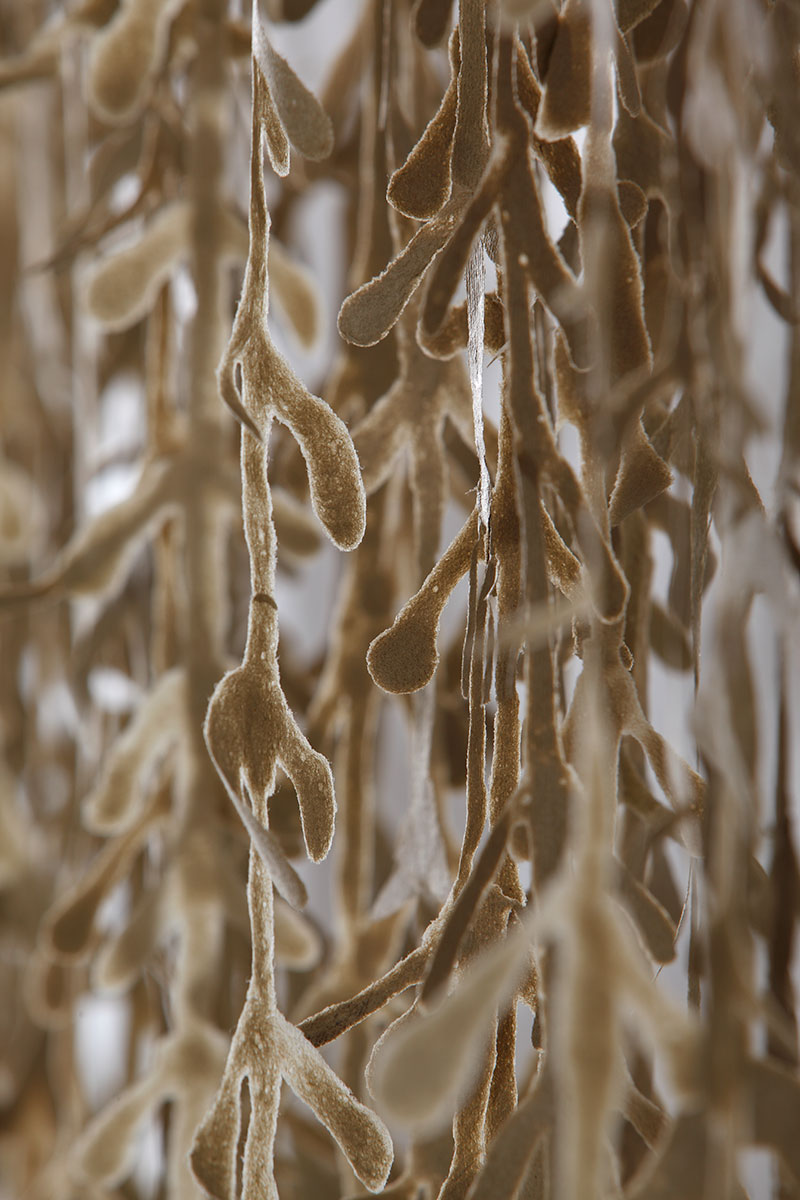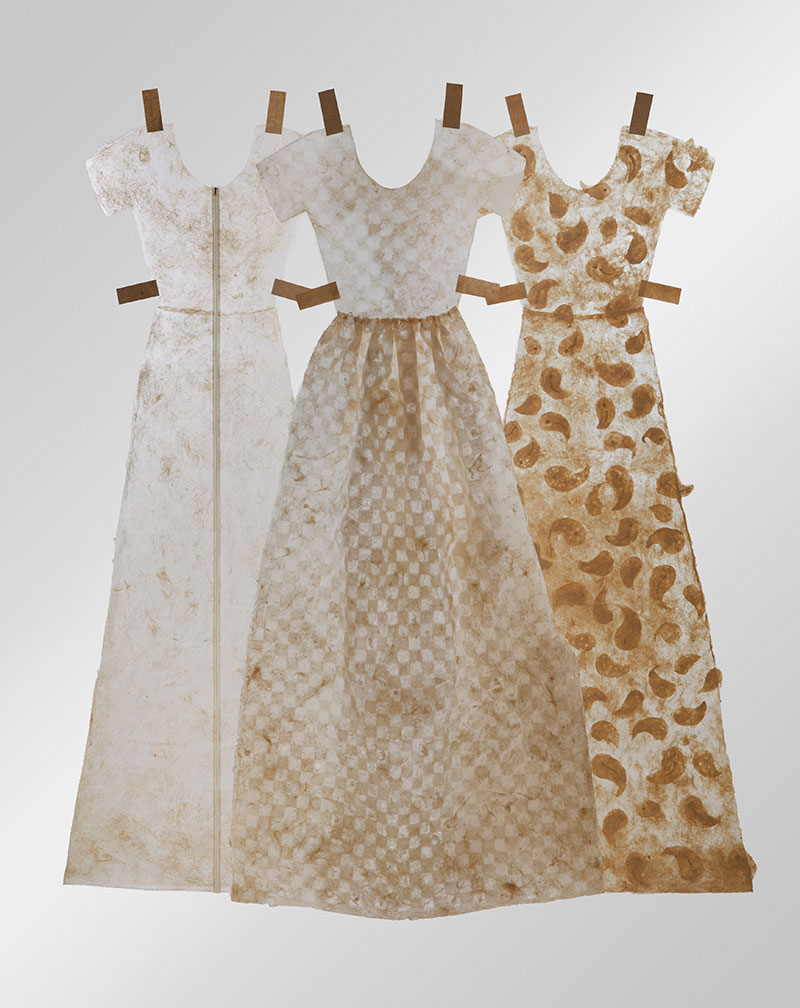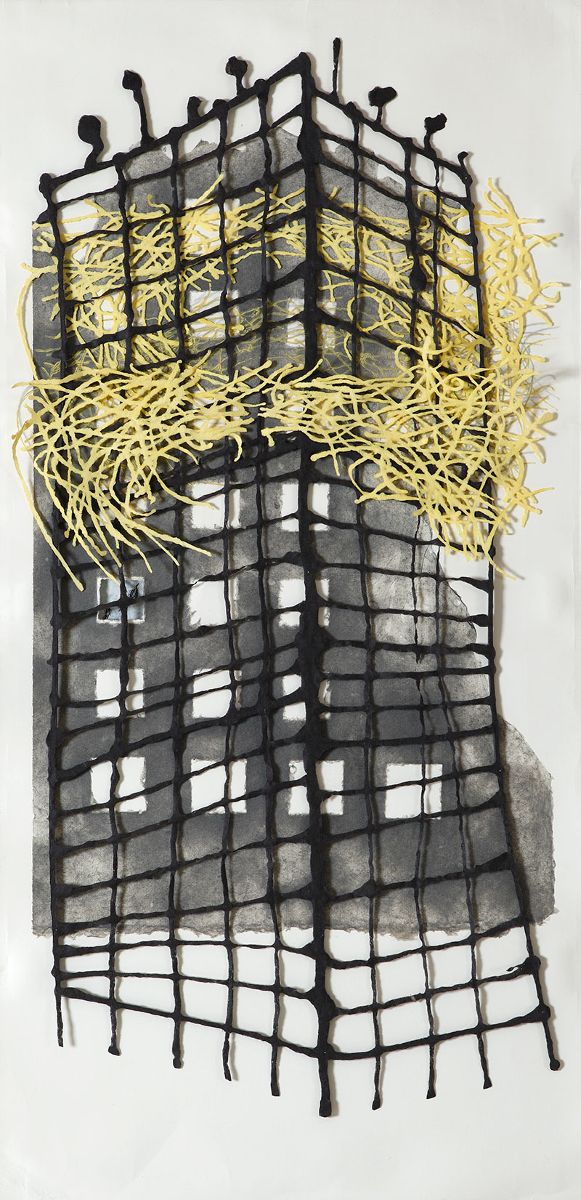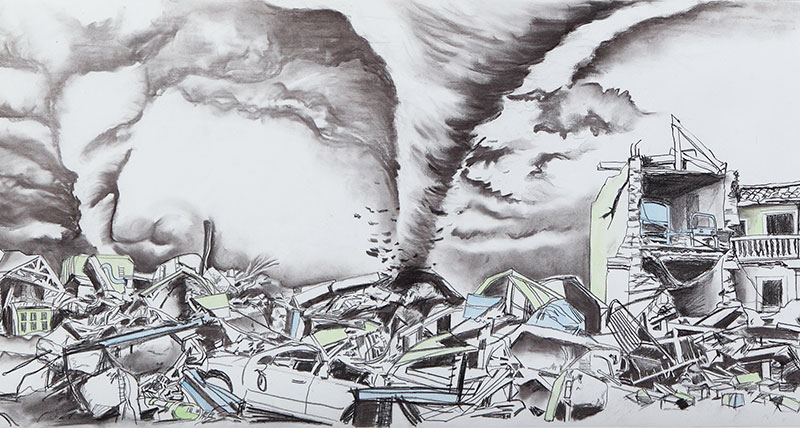
A large curtain of hand-ripped paper fashioned into the outline of an introduced weed greets the viewer at the entrance to The Nature of Paper, a survey exhibition of the work of Darwin-based artist Winsome Jobling at the Museum and Art Gallery of the Northern Territory. Bush Vanitas: Vines (2011) demonstrates her inventive mastery of the papermaking process as a form of alchemical craft. This extends outside the studio space to encompass the artist's sourcing of raw materials, a process that requires Jobling to harness her bio-cultural knowledge of the Darwin ecosystem in accordance with the ebbs and flows of the seasons and the plants each season yields. In this way, Jobling's concepts become literally embedded within the paper she creates. Her papermaking also forms the ground for her printed compositions. The images Jobling imprints onto her handmade paper at once complement and complicate the interplay between the method and the message about the nature of human impact on the world around us. While the process of producing paper laden with foraged plants could assume a harmonious relationship between humans and the environment, the imagery forces us to consider other realities. The respect with which she approaches nature is transformed into the responsibility to express concerns in its defence.
The Nature of Paper guides the viewer through drypoint prints envisaging environmental collapse as in Cyclone, Downpour and Monsoon (2013), handmade pendants salvaging diminishing bush landscapes in Ark (2013), and charcoal drawings that document the impact of catastrophic events in A Year of Natural Disasters (2011). Jobling traverses these landscapes speaking to art history and ecology in equal measure but always with an acute awareness of her own subjectivity. This subjectivity is evident in her use of banana pulp to create massive doll dresses suspended from the ceiling in her Dress Up series (1996)); their fragile appearances and resilient material composition refer to the construction of womanhood within the specific environment of the tropical Northern Territory.

The artist also makes critical statements about urban redevelopment in Proposed Developments (2010), taking this to the macro scenario through her prints, which draw comparisons between the surface of the earth and that of its galactic neighbours, as in Lunar Globe – res communis (2009). Connecting such different landscapes is Jobling’s conceptualisation of the “ground” – one of the most important concepts that drives her practice.[1] The emphasis on grounding within Jobling’s works extends beyond the technicality of the piece of paper forming the ground for the printed image, the physical ground from which her plant materials are sourced, and the visual ground of the picture plane on which her landscapes take shape. Jobling's grounding speaks of heritage, of locality and colonial invasion, of gendered experience, and of positioning within an environment shaped by ideology. The motifs and symbols through which Jobling expresses her visual arguments are grounded in responsibility; that is, the duty to express a perspective often forgotten within the totalising discourse of economic rationalism currently received in Australia as gospel. Some of Jobling's more recent and most compelling works within the exhibition include her drypoint prints of the surface of Mars, Lithosphere – Mars I (2015), which alludes to current intergalactic explorations taking place with the intention of plundering new worlds.
The Nature of Paper sees Jobling's earliest works communicating seamlessly with her latest offerings to produce a compelling and immensely satisfying exhibition surveying 26 years of practice. The fluidity of dialogue between each work is also a credit to the exhibition's curator Angus Cameron and the museum's exhibition team, who spent over a year selecting and compiling the works on display. These works speak to each other over time and through diverse yet interrelated themes. They testify to the artist’s conscientiousness in maintaining a firm subjective position to facilitate a bold and lucid vision. But The Nature of Paper also testifies to Jobling's quiet patience, consistency and longevity―all qualities as grounded as the natural world her art is never far from referencing in such powerful and palpable form.

.jpg)

Footnotes
- ^ See Q&A with Winsome Jobling in Imprint, April 2016: http://imprint.org.au/pca-announcements/qa-with-winsome-jobling/.
